CROSSWORD & PUZZLES
The Art of Clue Crafting: Creating Engaging Pop Culture Crossword Puzzles
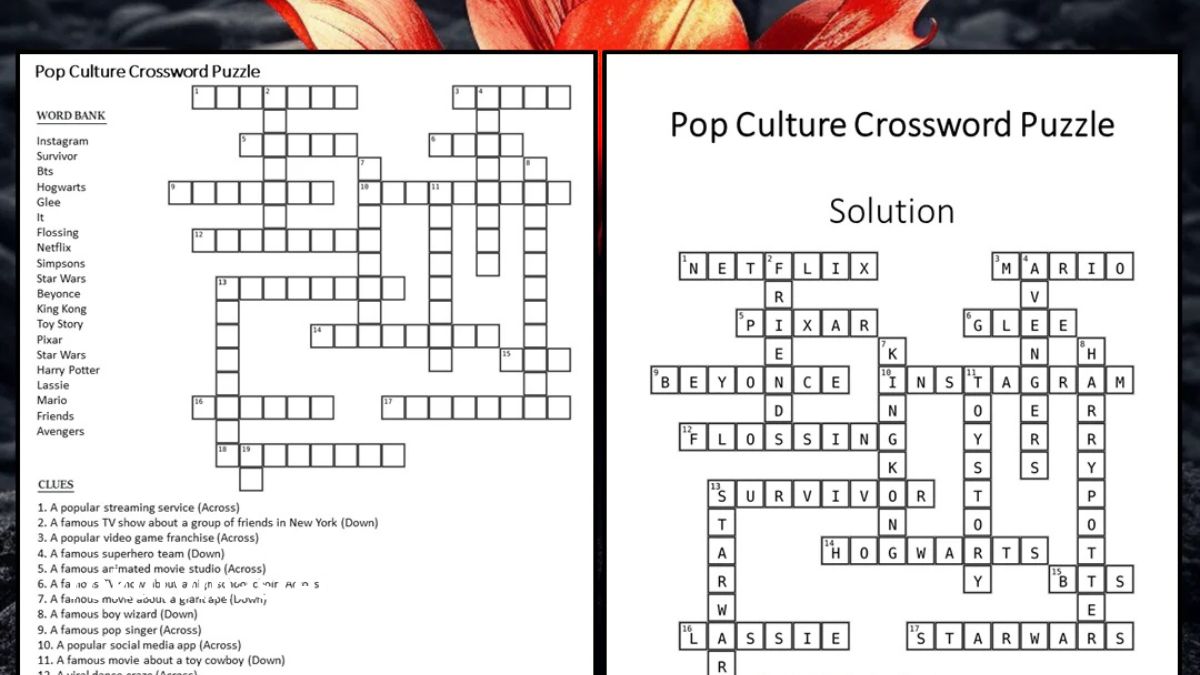
Crossword puzzles have long been a beloved pastime, blending language, logic, and creativity. But in recent years, a new trend has emerged: pop culture-themed crosswords. These puzzles tap into the collective consciousness of fandoms, memes, and trending topics, offering solvers a fresh, relatable challenge. For constructors, crafting clues that resonate requires equal parts wit, cultural savvy, and strategic thinking. In this article, we’ll explore the art of creating engaging pop culture crossword puzzles—from balancing niche references to designing clues that delight and surprise.
Understanding the Pop Culture Crossword Phenomenon
Why Pop Culture Crosswords Resonate
Pop culture crosswords thrive because they speak to shared experiences. Whether it’s a reference to a viral TikTok dance, a line from a cult-classic film, or a character from the latest superhero saga, these puzzles reward solvers for being plugged into the zeitgeist. Unlike traditional crosswords, which often rely on archaic vocabulary or obscure trivia, pop culture puzzles feel immediate and accessible—especially to younger audiences. They transform passive consumption of media into an interactive game, turning solvers into detectives decoding the cultural landscape.
Balancing Niche and Mainstream Appeal
The key challenge lies in striking a balance between niche and mainstream. A clue about the *Star Wars* sequel trilogy might engage millions, but referencing a minor character from a 1980s anime could alienate casual solvers. Successful constructors use a “layered” approach:
– **Top-tier clues** target widely recognized franchises (e.g., Marvel, *Stranger Things*).
– **Mid-tier clues** dive into subcultures (e.g., indie video games, niche streaming shows).
– **Deep cuts** are reserved for intersections where solvers can infer answers from crossing letters. This ensures accessibility while rewarding superfans.
The Anatomy of a Perfect Pop Culture Clue
Wordplay, Puns, and Double Entendres
Great clues often hinge on clever wordplay. For example:
– **“Grogu’s ride in *The Mandalorian* (5 letters)”** → ANSWER: “Pram” (referencing Baby Yoda’s floating bassinet).
– **“What Loki ‘gloriously’ pursues (7 letters)”** → ANSWER: “Purpose” (a nod to the show’s theme of self-discovery).
These clues reward solvers who think laterally, blending knowledge of the source material with linguistic creativity.
Leveraging Multimedia and Memes
Pop culture isn’t limited to movies and TV—it includes memes, viral tweets, and even TikTok sounds. A clue like **“Where ‘This is Sparta!’ was shouted (5 letters)”** (ANSWER: “Ether,” referencing the 2006 *300* meme remixed into a viral battle) bridges generations and mediums. Constructors must stay attuned to these ephemeral trends while ensuring clues have staying power beyond a viral moment.
Avoiding Obscurity Without Sacrificing Cleverness
The line between “challenging” and “obtuse” is thin. A clue like **“Agent Cooper’s favorite dessert in *Twin Peaks* (5,5)”** (ANSWER: “Cherry Pie”) works because the show has a dedicated fanbase and the answer is inferrable from context. In contrast, **“Third cousin of *Riverdale*’s Archie Andrews (9 letters)”** risks frustration unless the answer is clued more transparently.
Designing the Puzzle Grid: Structure Meets Theme
Grid Symmetry and Pop Culture Themes
A well-constructed grid balances black squares and white spaces to create a visually appealing and solvable experience. For themed puzzles, central entries often anchor the pop culture motif. For example, a *Harry Potter*-themed puzzle might feature “HORCRUX” as a central 7-letter entry, with intersecting clues like **“He Who Must Not Be Named”** (ANSWER: “Voldemort”) and **“Gryffindor’s sword-wielder”** (ANSWER: “Neville”).
Integrating Easter Eggs and Hidden Gems
Easter eggs add layers of delight for attentive solvers. Imagine a *Taylor Swift*-themed puzzle where shaded squares spell out “ERAS” when solved, or a *Star Trek* grid where the black squares form the shape of the USS Enterprise. These touches transform the puzzle from a mental exercise into a tribute to the source material.
Difficulty Curve and Pop Culture Knowledge
A puzzle’s difficulty should ramp up gradually. Early clues might test broad knowledge (**“Netflix’s *Wednesday* protagonist (7 letters)”** → ANSWER: “Addams”), while later ones demand deeper cuts (**“Actor who played Uncle Fester in the 1991 *Addams Family* (7 letters)”** → ANSWER: “Astin”). This progression keeps solvers engaged without overwhelming them.
Case Study: Deconstructing a Viral Pop Culture Crossword
The Puzzle That Broke the Internet
In 2023, a *Barbie*-themed crossword went viral, praised for its witty clues and inclusive design. Let’s break down its success:
– **Theme:** The central entry was “BARBIECORE,” reflecting the film’s aesthetic.
– **Clue Highlights:**
– **“2023’s highest-grossing film, familiarly (6 letters)”** → ANSWER: “Barbie.”
– **“She recited the monologue about impossible beauty standards (6 letters)”** → ANSWER: “Ferris” (referencing actress America Ferrera).
– **Design:** Pink-shaded squares spelled “FEMINISM,” aligning with the movie’s themes.
This puzzle worked because it celebrated the film’s cultural impact while inviting solvers to reflect on its message.
Tools and Tips for Aspiring Constructors
Software and Resources
– **Crossword Compiler** or **CrossFire** for grid design.
– **XWord Info** and **Reddit’s r/crossword** for community feedback.
– **IMDb**, **Know Your Meme**, and **Trends24** to stay updated on pop culture.
Testing Your Puzzle
Share drafts with diverse test solvers—casual fans, hardcore nerds, and crossword newbies. If a clue stumps everyone, it’s too obscure; if it’s solved instantly, it might need more nuance.
Ethical Clue Crafting: Avoiding Spoilers
Be mindful of spoilers! A clue like **“Avenger who wields Mjolnir in *Endgame* (4 letters)”** (ANSWER: “Jane”) could ruin the movie for someone. Use vague phrasing or add a spoiler warning if necessary.
Conclusion: The Future of Pop Culture Crosswords
As media fragments into countless niches, pop culture crosswords will evolve to reflect hyper-specific fandoms and micro-trends. Yet their core appeal will remain: the joy of seeing your passions woven into a tapestry of words. For constructors, the mission is clear—keep your finger on the pulse, embrace creativity, and remember that every clue is a love letter to the stories that shape us. Now, grab your pencil (or app) and start crafting!
CROSSWORD & PUZZLES
Behind Closed Doors: The Significance of Vault Openers in NYT Crossword Culture
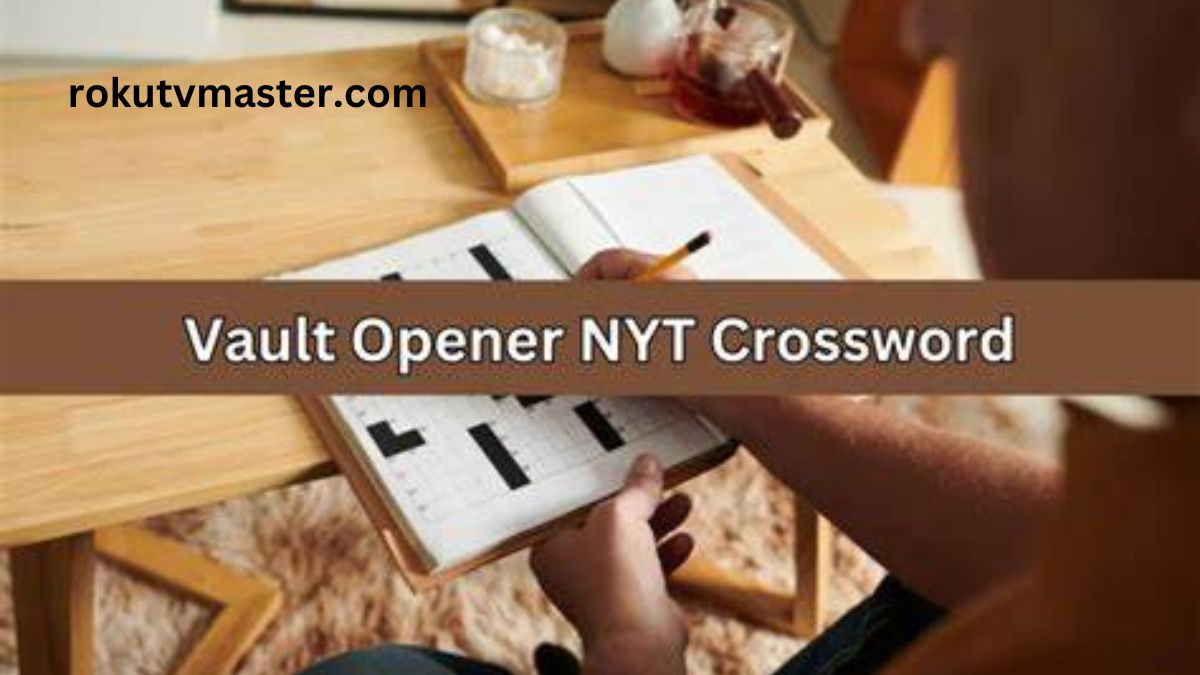
But within this world lies a fascinating element known as vault openers—those clever clues that unlock more than just answers. They add layers of complexity and surprise to the New York Times crossword experience. As you navigate grids filled with letters and words, it’s worth delving deeper into what makes these unique entries so significant to puzzle enthusiasts everywhere. Buckle up; we’re about to explore the intricate role of vault openers in NYT crossword culture!
The role of vault openers in NYT crossword puzzles
Vault openers serve as the gateway to a more complex world within NYT crossword puzzles. They are not your average clues; they unlock a deeper layer of engagement for solvers.
These unique prompts often hint at a significant theme or concept that connects multiple answers. Solving them can feel like deciphering an enigma, setting the stage for the entire puzzle.
Think of vault openers as keys. They allow solvers to approach the grid with curiosity and excitement, ready to discover what lies beneath each clue’s surface.
They create moments of revelation, transforming a simple pastime into an intellectual adventure. The thrill comes from piecing together disparate elements into one cohesive narrative.
In essence, these clever hints elevate the experience. They invite players to think critically and creatively while navigating through clever wordplay and intricate connections in their journey toward completion.
What is a vault opener and how is it different from a regular clue?
A vault opener is a special type of clue found in crossword puzzles, particularly in the New York Times. It serves as an invitation to explore deeper layers of wordplay and references.
Unlike regular clues that might hint at straightforward answers, vault openers are designed to challenge solvers. They often require lateral thinking or knowledge of specific pop culture artifacts.
For example, a typical clue could ask for a synonym or definition while a vault opener may reference something obscure. This element adds excitement and complexity to the solving experience.
Vault openers can also reveal themes within the puzzle itself. They are like keys unlocking hidden treasures waiting to be discovered by eager puzzlers ready for adventure in their grids.
Famous examples of vault openers in NYT crosswords
Vault openers have left a lasting impression on the NYT crossword scene, often revealing clever twists. One standout example is “Word that comes before ‘you’ in a famous song,” leading solvers to the catchy phrase “I Want.”
Another memorable vault opener was, “A tree with roots but no fruit.” This clue beckoned puzzle enthusiasts toward the unexpected answer of “family,” showcasing how wordplay can surprise even seasoned players.
The artistry doesn’t stop there. In one instance, an intriguing vault opener asked for “Something you might give your enemy.” The answer? “Advice”—a playful nod to irony that resonates deeply within crossword culture.
These examples highlight not just creativity but also the thrill derived from cracking these challenging clues. Each vault opener serves as a unique key, unlocking layers of meaning and enjoyment for avid puzzlers everywhere.
Controversies surrounding the use of vault openers
Vault openers spark debate among crossword enthusiasts. Some argue they disrupt the flow of solving, introducing unexpected challenges that can frustrate players.
Critics often highlight their obscure references or niche knowledge required to decipher them. This exclusivity can alienate casual solvers who might find themselves stumped by a clue that requires specialized knowledge.
On the other side, advocates defend vault openers as an art form within puzzles, elevating the experience and adding layers of complexity. They appreciate how these clues push boundaries and encourage deeper thinking.
However, debates frequently arise about balance. Should puzzles remain accessible to everyone? Or is it acceptable to cater to a select group of hardcore fans? The tension between inclusivity and sophistication remains palpable in discussions surrounding vault openers.
The impact of vault openers on the crossword community
Vault openers have transformed the landscape of crossword puzzles, sparking both intrigue and debate among enthusiasts. These clues draw players deeper into the puzzle’s narrative, creating an engaging experience that goes beyond mere wordplay.
Their unique structure often requires a shift in thinking, pushing solvers to explore unconventional paths. This challenge fosters creativity and collaboration within the community as puzzlers share strategies and insights into cracking these enigmatic codes.
Moreover, vault openers encourage a sense of camaraderie. Fans gather online to discuss their experiences with particularly tricky ones or exchange tips on tackling future challenges.
As a result, they cultivate an inclusive environment where seasoned veterans can mentor newcomers while exchanging solutions across forums and social media platforms. The thrill of uncovering a well-crafted vault opener adds excitement that resonates throughout puzzle circles far beyond the grid itself.
Conclusion:
The future of vault openers in NYT crosswords appears promising. As puzzle enthusiasts continue to seek innovation and creativity, these unique clues have carved out their niche. They challenge solvers while offering a sense of triumph when deciphered.
With the rise of digital platforms, more people are engaging with crossword puzzles than ever before. This influx could lead to an increase in demand for inventive approaches like vault openers. The New York Times has always been at the forefront of crossword innovation, so it’s likely they will keep experimenting with this format.
However, as trends evolve within the puzzle community, maintaining balance is key. While vault openers add excitement, they must not overshadow traditional clues that many solvers cherish. A blend of both might be the answer moving forward.
Crossword culture thrives on change and adaptation while honoring its roots. Vault openers embody this spirit perfectly—refreshing yet grounded in tradition. As we look ahead, it’s clear that these clever hints will remain an integral part of the ever-evolving landscape of crosswords for years to come.
CROSSWORD & PUZZLES
A Guide to Mastering the Grains Unit 5 Crossword Puzzle

Crossword puzzles have long been a beloved pastime for many, offering both a challenge and a delightful escape. As you sit down with a pencil in one hand and the Grains Unit 5 Crossword Puzzle in front of you, you’re not just engaging your brain; you’re diving into an enjoyable world of words and clues. Whether you’re a seasoned solver or new to the game, this puzzle provides an excellent opportunity to enhance your vocabulary while having fun. Ready to sharpen those pencils? Let’s explore what makes crossword puzzles not just entertaining but also beneficial for your mind!
Benefits of Solving Crossword Puzzles
Crossword puzzles offer a multitude of benefits that go beyond mere entertainment. Engaging with these word games can boost cognitive functions significantly. Regular puzzle solvers often experience improved memory and enhanced problem-solving skills.
The act of filling in the boxes encourages critical thinking and promotes mental agility. As you decipher clues, your brain works to make connections between words and ideas, sharpening your linguistic abilities.
Moreover, working on crossword puzzles can be a great stress reliever. Taking time to focus on something enjoyable allows for a mental break from daily pressures.
Socially, they can also foster connections. Whether collaborating with friends or joining a community of enthusiasts online, sharing strategies enriches the experience further.
Understanding the Grains Unit 5 Crossword Puzzle
The Grains Unit 5 Crossword Puzzle is designed to test your knowledge of grain-related terms and concepts. This puzzle covers various topics, including types of grains, their uses, and nutritional benefits.
As you dive into the grid, you’ll encounter clues that challenge your understanding. Some may reference specific grains like quinoa or barley, while others might highlight cooking methods or health benefits associated with these foods.
Understanding the context of each clue is crucial. Familiarity with common grain vocabulary will give you a significant advantage in unlocking answers.
Take note of any patterns that emerge as you fill in letters. Sometimes, completing one section can provide hints for other intersecting words. The thrill lies not just in solving but also in learning more about grains along the way!
Tips for Solving the Puzzle
When tackling the Grains Unit 5 Crossword Puzzle, start with the easiest clues. They often provide crucial letters for more challenging ones.
Look for common prefixes and suffixes related to grains. Words like “grainy” or “harvest” might pop up frequently.
Don’t hesitate to pencil in guesses. Many times, a hunch can lead you to fill out adjacent boxes that clarify other answers.
Use online dictionaries or grain-related resources if you’re stuck on specific terms. A quick search can bring useful insights into vocabulary you may not know yet.
Taking breaks is essential too. Stepping away from the puzzle allows your brain to reset and approach it with fresh eyes later on.
Collaborate with friends or family members who share an interest in puzzles. Two heads are better than one when it comes to cracking those tricky clues!
Commonly Used Grains Vocabulary
When diving into the Grains Unit 5 Crossword Puzzle, it’s essential to familiarize yourself with some commonly used terms. These words can unlock many of the puzzle’s clues.
First up is “cereal.” This refers not just to breakfast food but also encompasses grains like wheat and rice. Another important term is “barley,” a versatile grain often found in soups and beers.
“Quinoa” has gained popularity for its health benefits. It’s packed with protein and makes an excellent addition to salads or bowls.
Don’t overlook “oats,” either! They are perfect for a hearty breakfast and come in various forms, from rolled oats to steel-cut varieties.
Remember the word “gluten.” It’s crucial for baking bread but can pose challenges for those with sensitivities. Knowing these terms will help you crack those tricky crossword clues more easily!
Strategies for Finding Clues and Filling in Answers
Start by scanning the entire puzzle. Look for clues that seem familiar or those with fewer letters, as they often provide anchors for filling in other answers.
Focus on the intersecting words. If you have a letter filled in from a horizontal clue, see how it fits into vertical ones. This can help jog your memory and reveal more solutions.
Don’t hesitate to pencil in tentative answers. They can spark new insights without committing you to incorrect choices right away.
Use online resources sparingly if you’re stuck. Sometimes a quick search can lead to inspiration rather than outright answers.
Trust your instincts. Crossword puzzles are as much about intuition as they are about knowledge. Keep an open mind and enjoy the process of discovery.
Conclusion: Keep Practicing and Enjoy the Rewards of Solving the Puzzle!
Crossword puzzles like the Grains Unit 5 Crossword Puzzle offer a delightful challenge. They engage your mind and foster creativity.
As you continue to practice, you’ll notice improvement in both speed and accuracy. Each solved puzzle builds confidence, making the next one even more enjoyable.
Remember, it’s all about enjoying the process. Celebrate small victories when you fill in those tricky squares or uncover a clever clue.
Over time, not only will your vocabulary expand, but so will your problem-solving skills. Embrace each puzzle as an opportunity for growth and fun.
So grab that pencil or pen, find a cozy spot, and dive back into the world of crosswords. You’ll soon discover that every moment spent solving brings its own set of rewards!
FAQs
Crossword puzzles have become a beloved pastime for many, and the Grains Unit 5 Crossword Puzzle is an excellent example of how engaging these brain teasers can be. As you practice solving them, you’ll find that your vocabulary expands and your problem-solving skills sharpen.
Here are some frequently asked questions to help you further:
What materials do I need to solve a crossword puzzle?
All you really need is a pencil or pen and the crossword grid. Using an eraser can also be helpful if you’re working with a pencil.
How long does it typically take to complete the Grains Unit 5 Crossword Puzzle?
The time varies from person to person, but most people can finish in about 20-30 minutes once they grasp the key terms related to grains.
Are there any apps or websites specifically for practicing crosswords?
Yes! Many platforms offer daily crosswords, including specialized sections on topics like grains. Look out for dedicated educational apps as well.
Can I create my own crossword puzzle focused on grains?
Absolutely! There are online tools that allow you to design custom puzzles based on specific themes or subjects.
How often should I practice solving crosswords for improvement?
Consistency is key. Aim for at least two or three sessions per week to see noticeable improvements over time.
Keep exploring these resources and enjoy every moment spent unraveling those clues. Happy puzzling!
CROSSWORD & PUZZLES
Vault Opener NYT Crossword: An Informative Guide
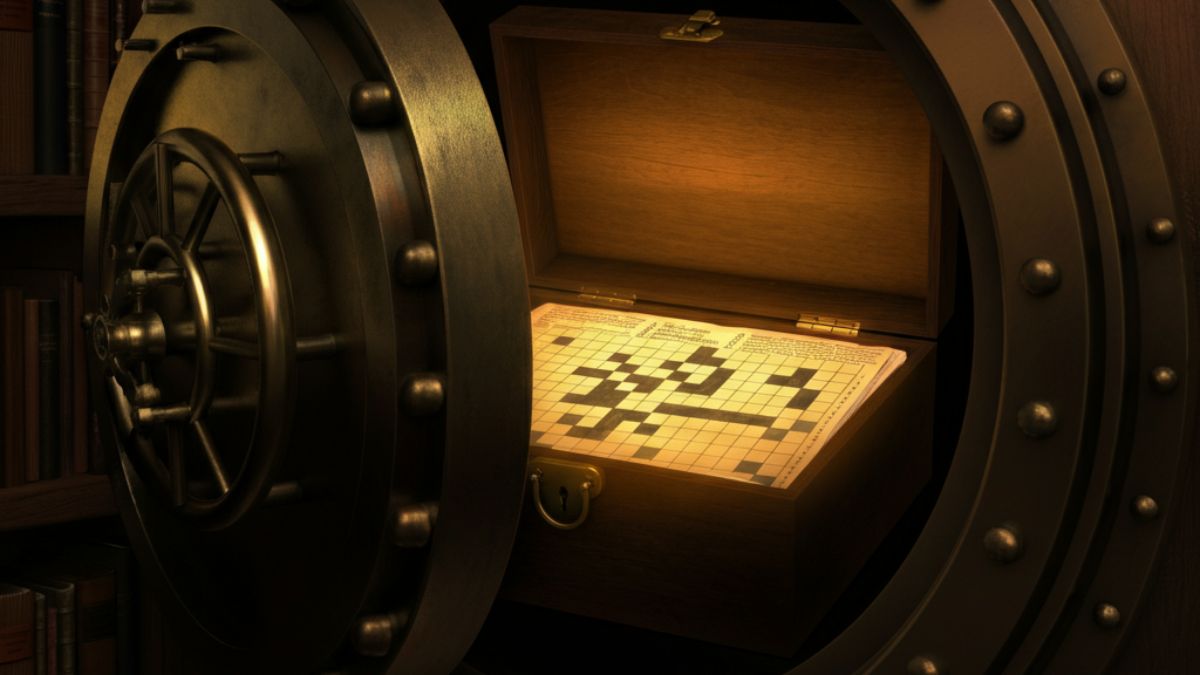
You’re not alone if you’ve encountered the phrase “Vault Opener NYT Crossword” while solving the New York Times (NYT) crossword puzzle. This clue has puzzled and intrigued many crossword enthusiasts. But what exactly does it mean, and how can you decipher it efficiently?
Whether you’re a seasoned crossword solver or a curious beginner, this guide will illuminate everything you need to know about “Vault Opener.” By the time you’re done reading, you’ll have a better understanding of how to approach similar clues and improve your crossword-solving skills.
What Does “Vault Opener NYT Crossword” Mean in the NYT Crossword?
The New York Times crossword is widely loved for its clever wordplay and diverse clues across all themes. “Vault Opener NYT Crossword,” like many other cryptic crossword clues, often relies on your ability to think beyond the literal meaning of words. Instead of referencing something as straightforward as a key or combination lock, this clue might describe something more figurative.
For example, “Vault Opener” could:
- Refer to something that metaphorically causes a vault (a leap or a surge) to happen.
- Be a pun, hinting at a physical movement or action, such as a leap in gymnastics.
- Represent a letter, word, or term that opens or begins another object or concept.
It’s understanding these dual meanings that makes crossword solving such a thrilling mental exercise!
Examples of “Vault Opener” in Crosswords
To better illustrate how this clue might appear and be solved in crosswords, consider the following potential examples:
Example 1
- Clue: Vault opener
- Answer: POLE
- Explanation: This refers to a “pole vault,” a sporting event where athletes use a pole to leap high into the air. The word “pole” symbolizes the item used to open—or make possible—the vault.
Example 2
- Clue: Vault opener
- Answer: LEAP
- Explanation: This answer plays on the physical act of vaulting, which involves leaping. The word “leap” metaphorically opens or leads to the act of vaulting.
Example 3
- Clue: Vault opener
- Answer: HINGE
- Explanation: A vault could also refer to a secure storage, like a safe. A hinge, which is part of the mechanism that opens a vault, could just as fittingly answer this clue.
Understanding the context is crucial in cracking this clue. The surrounding hints, the letter count for the answer, or any already solved intersecting words will help provide context and narrow down options.
Strategies to Solve Clues Like “Vault Opener”
Crossword-puzzle clues like “Vault Opener” often fall under the category of cryptic or wordplay-based puzzles. Tackling these requires a combination of intuition, general knowledge, and clever reasoning. Here are some strategies to help you solve such puzzles:
1. Read Beyond the Surface Meaning
Many crossword clues are designed to mislead. For example, while “Vault Opener NYT Crossword” might conjure images of a physical safe, think metaphorically. Could it mean an object or action that metaphorically “opens” or starts something, like a motion or phrase?
2. Look for Synonyms
Break down the key terms—what are potential synonyms for “vault”? It could mean things like:
- A jump or leap (e.g., in gymnastics or movement).
- A secure storage or safe.
- An architectural dome.
The same applies to “opener.” Consider different interpretations:
- The first letter or part of something (e.g., the “opener” of a word or phrase).
- A tool or mechanism (e.g., key, hinge, or crank).
Match synonyms creatively to find a logical connection.
3. Leverage Crossings and Letter Patterns
Crosswords are designed as interconnected puzzles. By solving intersecting clues, you’ll gain letters that narrow your possibilities for “Vault Opener NYT Crossword.” For example:
- If the answer you have so far begins with “P,” a term like “POLE” starts to make sense.
- If it ends in “E,” you might be looking at words like “HIKE” or “LEAP.”
4. Think Thematically
The NYT crossword often follows themes, especially on certain days of the week. If the puzzle has a sports or Olympic theme, “Vault Opener” could indicate terms like “POLE” or “BAR.” If themes lean towards architecture, it could hint at “DOOR” or “HINGE.”
Understanding the theme can significantly help decode tricky clues.
5. Use Crossword Solving Tools for Practice
If you’re stuck, tools like Wordplay apps or crossword-solving assistants can be handy for brainstorming possibilities. However, be cautious about over-relying on these—it’s much more fulfilling when you solve it yourself!
Why Clues Like “Vault Opener” Keep Crosswords Exciting
The beauty of challenges like “Vault Opener” lies in their capacity to stretch your reasoning skills while keeping you entertained. The occasional tricky clue makes you stop, scratch your head, and rethink your approach, but that “Aha!” moment when you finally solve it is what keeps crossword enthusiasts coming back.
Additionally, solving puzzles contributes to mental fitness. Studies have shown that engaging in mental exercises like crossword puzzles can help maintain cognitive function and memory. Tackling tricky wordplay clues is more than just fun—it’s good for your brain!
Practice Makes Perfect
If decoding cryptic clues like “Vault Opener” seems overwhelming initially, remember that crossword-solving skills improve over time with regular practice. Tackle puzzles daily, and gradually, you’ll start recognizing patterns and wordplay that previously stumped you.
The Next Step for Crossword Enthusiasts
Now that you’ve unraveled the mystery of “Vault Opener NYT Crossword” in the NYT crossword, it’s time to put your skills to the test! Grab a crossword puzzle, start solving, and see if you can apply these tips to breeze through even the trickiest clues.
Want to level up even further? Consider joining online crossword groups or forums, where enthusiasts share tips, solutions, and insights into the most challenging puzzles. Who knows—you might find your next favorite clue there!
-

 TECH9 months ago
TECH9 months agoExploring Precision Technologies International: The Future of Advanced Engineering
-

 TECH9 months ago
TECH9 months agoStevens Institute of Technology: Pioneering Innovation and Excellence in Education
-

 NEWS9 months ago
NEWS9 months agoThe NYT’s Take on British Affairs: A Comprehensive Review
-

 FINANCE8 months ago
FINANCE8 months agoInvestiit.com Tips: Maximizing Your Investment Success
-

 HEALTH9 months ago
HEALTH9 months agoThe Ultimate Guide to Physical Therapy Web Design That Converts
-

 NEWS3 months ago
NEWS3 months agoTop 5 Reasons to Follow UKOBIW.com for Your Daily News Fix
-
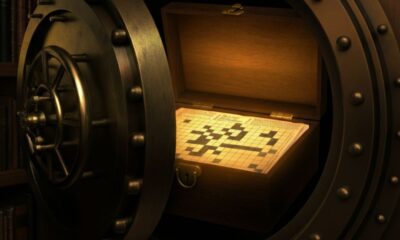
 CROSSWORD & PUZZLES6 months ago
CROSSWORD & PUZZLES6 months agoVault Opener NYT Crossword: An Informative Guide
-
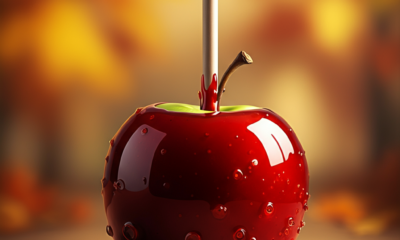
 HEALTH9 months ago
HEALTH9 months agoThe Allure of Candy Red: A Bold Hue That Never Goes Out of Style
